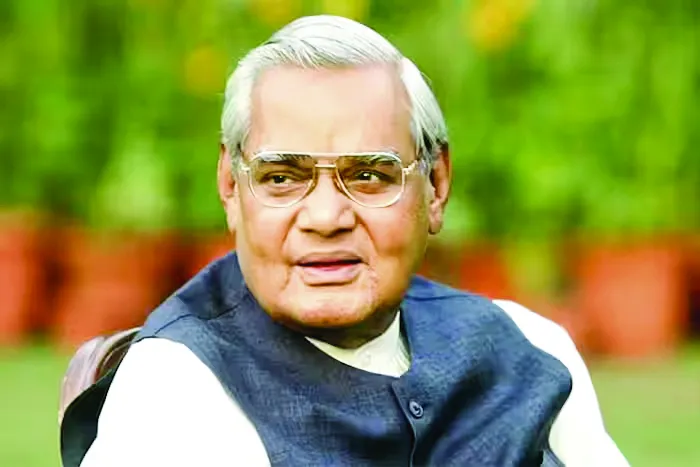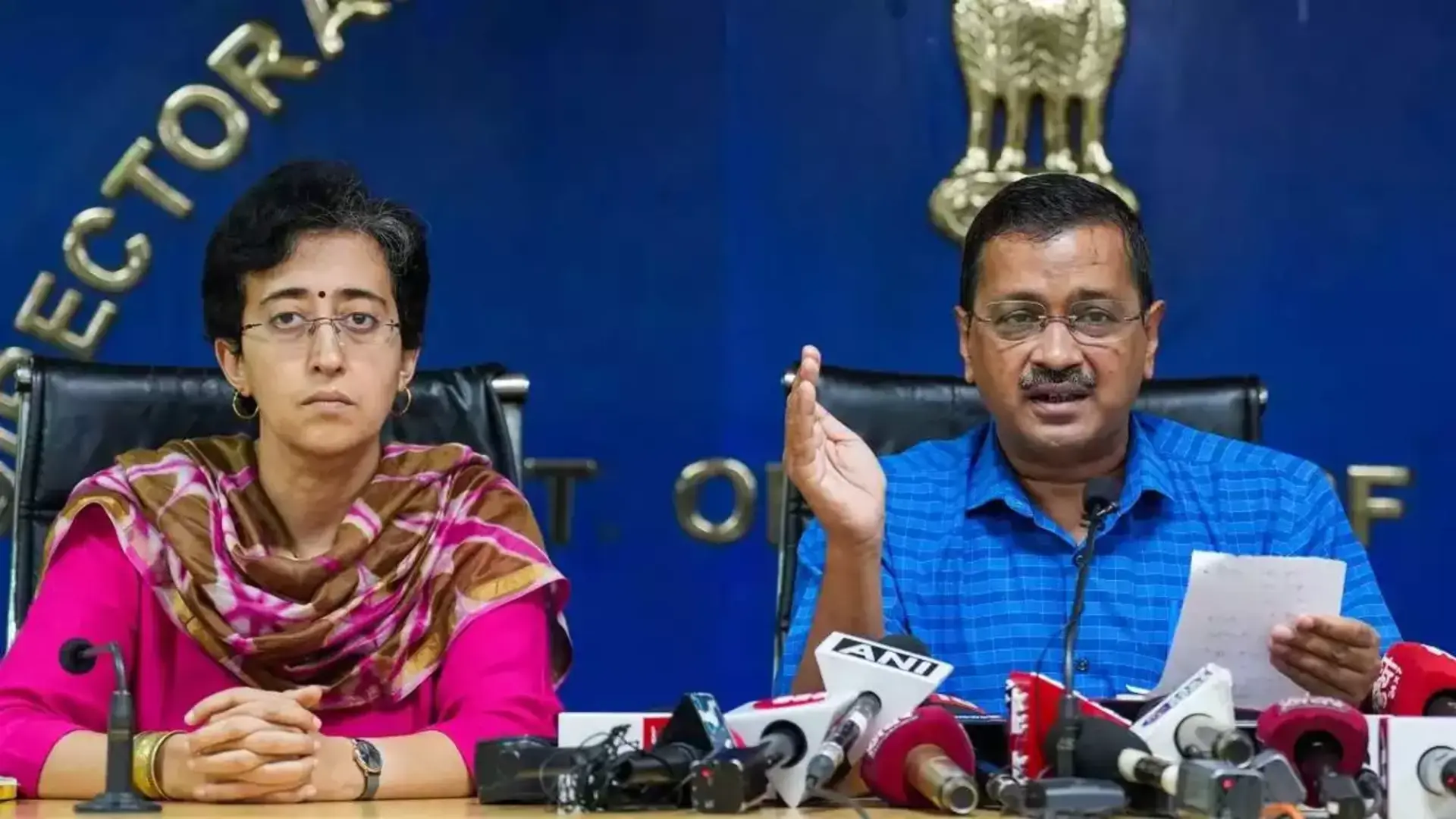Hinduism, the oldest religion and the one that has given the world innumerable gifts including Ayurveda and yoga, has had its shares of ups and downs. Saints and social reformers have from time to time cleansed it of obscurantism and ills which crept in due to vested interests misusing its liberal ethos. A Renaissance took place when Adi Shankaracharya gave it a structure and new energy. Another Renaissance took place as early freedom fighters fought obscurantism and social evils in the eighteenth century. It will perhaps not be exaggeration to say that yet another Renaissance is taking place now with the depleted temples being restored to glory and the suppressed spirit of the believers of the faith finding a new voice, energy and joy. It is not that this movement for the glory of the peace-loving religion in the country of its origin is a few years old.
It has been carried out over decades by saints and seers including Swami Chandrasekharendra Saraswathi, 68th Shankaracharya of Kanchi Kamakoti Peetham who worked for temple restoration and country’s spiritual revival. The efforts are finding fruition and the inauguration of Kashi Vishawanath Corridor in Varanasi is a manifestation of the long-awaited change.
The celebration of India cannot happen without celebration of its sanatan religion, its way of life. The Sanatan Dharma forms the backbone, identity, the life-force of this country and has shaped it over the millennia giving it myriad colours. It is the spring force of creativity in terms of music, dance, art, drama and architecture. It has fostered several branches of science including mathematics, astronomy and, metallurgy. In medical science, Ayurveda and Yoga are its gifts to the world. Dynamic and ever-evolving, Hinduism encourages an individual to pursue his own journey of ultimate truth. There is also collective expression of worship in terms of ‘aartis’ in temples and along its sacred rivers.The religion has universal values, it seeks welfare of all. ‘Vasudev Kudumbakam’ is its spirit and there is no scope of narrow-mindedness. All this together contributes to India’s soft power and forms the basis of its abiding culture.
Sanatan Dharma and its values could not be suppressed in long years of foreign rule though aberrations came about and had to be cleaned from time to time. Perhaps insecure of their own religion, the invaders sought to humiliate the practitioners of Sanatan Dharma and break their spirit. Temples were ransacked and mosques built on or adjacent to the most sacred places associated with Hinduism. Jazia tax was imposed. But the religion kept producing men and women of sterling quality and extraordinary strength who kept sending the right message across to the devout and the common man.
The British did their own bit to try and show that their culture was superior to the native culture and resorted to conversions. Hindu symbols were neglected and the structures got dilapidated. Kashi Vishwanath temple complex, among the most sacred places of Hinduism, also fell into neglect. Mahatma Gandhi, who addressed a gathering in Varanasi or Banaras in 1916, expressed his deep disappointment with the dirty state of the Kashi Vishwanath temple.Gandhi found the areas as filthy as it had been during his earlier visit to Banaras about a decade back.
“If a stranger dropped from above on to this great temple and he had to consider what we as Hindus were, would he not be justified in condemning us? Is not this great temple a reflection of our own character? I speak feelingly as a Hindu. Is it right that the lanes of our sacred temple should be as dirty as they are?” he said.
He also wrote about it in his autobiography.
“The approach was through a narrow and slippery lane. Quiet there was none. The swarming flies and the noise made by the shopkeepers and pilgrims were perfectly insufferable…Where one expected an atmosphere of meditation and communion, it was conspicuous by its absence,” he wrote.
The inauguration of Varanasi temple corridor earlier this month has sought to address various issues brought about by neglect, encroachments and rise in city’s population in one of the oldest living cities of the world, among holiest for Hindus as also for Buddhists and Jains. Considered the cultural capital of the country with a deeply embedded syncretic culture, the city has been a centre of learning and civilization for over 3,000 years and the temple of Lord Shiva here is among 12 jyotirlingas in the country symbolising the manifestation of the divine.
Ganga, which is said to have its origins in the tresses of Lord Shiva, finds its expanse in Varanasi. As Prime Minister Narendra Modi, who is MP from Varanasi, noted in his speech at the inaugural event, the corridor is not just a grand building but a symbol of the Sanatan culture of India. “It is a symbol of our spiritual soul. This is a symbol of India’s antiquity, traditions, India’s energy and dynamism. The dedication of Kashi Vishwanath Dham will give a decisive direction to India and will lead to a brighter future. This complex is a witness of our capability and our duty. With determination and concerted thought, nothing is impossible,” he said.
Those accusing Prime Minister Modi of making a spectacle of a religious event should remember that freedom fighters also used collective symbols of Sanatan culture to build resistance against the British.
Lokmanya Bal Gangadhar Tilak turned Ganeshotsav from private celebration to community festival to unite people against the British. Ganesh Puja was turned into a socio-cultural phenomenon with deep roots in heritage and tradition with participation of all communities. But the governments after freedom movement too did not fully appreciate the spirit and the need of redeeming the monuments of country’s socio-cultural identity to foster a spirit of national pride and these continued in a state of neglect.
It is this denial of space, this lack of recognition and appreciation of liberal ethos of Sanatan culture, this constriction and narrow mindedness, which has hurt sentiment of people and is sought to be redeemed and repaired.
The Varanasi temple was among the Hindu sacred places targeted during Mughal rule by an intolerant Aurangzeb. Maharani Ahilyabai Holkar of Indore laid the foundation to revive the temple about 250 years ago.
It took decades of litigation for a veridict in the Ram Janambhoomi-Babri masjid case and the Supreme Court judgement in 2019 paved the way for construction of a grand Ram temple in Ayodhya. The temple, being built as a unique example of Indian architecture, is seen as a symbol of India’s ancient culture, eternal faith and will be opened to public by December 2023. It is worth recalling that India’s first Prime Minister Jawaharlal Nehru had expressed his disapproval at the then President Dr Rajendra Prasad attending the event for inauguration of a revamped Somnath Temple in Gujarat, which had come under attack of foreign invaders.
Sardar Vallabhbhai Patel, India’s first Home Minister announced the decision to reconstruct the temple. Inauguration of reconstructed Adi Shankaracharya Samadhi in Kedarnath, expansion of road infrastructure for char dham yatra, Ram-Janaki road, Ramayana Circuit, Buddha Circuit, Kartarpur Sahib Corridor, four- laning of key sections of Shri Sant Dnyaneshawar Maharaj Palkhi Marg and Shri Sant Tukaram Maharaj Palkhi Marg are part of efforts to value and strengthen India’s cultural legacy. Facilities are also being improved as religious sites across the country including Gurvayur temple, Kanchipuram-Velankanni, Jogulamba Devi temple, Belur Math, Dwarka ji and Parshuram Kund.
Any country makes progress on the basis of its inherent strength. The rise of soft power is as vital as country’s military, diplomatic and economic strength. The past few years have seen concerted efforts in these directions. India’s proposal for declaration of International Day of Yoga found unprecedented support at the United Nations. The country’s esteem has risen in the world as a result of its growing economic strength and the efforts towards cultural revival. The world respects those who value their own culture. The past few years have seen temples getting prominence in some Muslim countries.
PM Modi laid the foundation stone for a Hindu temple in Abu Dhabi the first in the UAE in 2018 during his visit to the country. He launched a multi-million-dollar renovation project of a 200-year-old temple in Bahrain in 2019. India has been regarded as Vishwa Guru in the past and is moving to regain the stature by revitalising its culture and heritage and strengthening the self-esteem of its people.
Every country and religion gives pride of place to places associated with its cultural symbols and religious deities. India is also doing so and correcting the wrongs, neglect and indifference of the past. This cultural Renaissance is ushering in innumerable fountains of joy.
The writer is a political analyst and former Chairman, Andhra Pradesh Electronics Development Corporation. The views expressed are the writer’s personal.
PM Modi laid the foundation stone for a Hindu temple in Abu Dhabi the first in the UAE in 2018 during his visit to the country. He launched a multi-million dollar renovation project of a 200-year-old temple in Bahrain in 2019. India has been regarded as Vishwa Guru in the past and is moving to regain the stature by revitalising its culture and heritage and strengthening the self-esteem of its people. Every country and religion gives pride of place to places associated with its cultural symbols and religious deities













